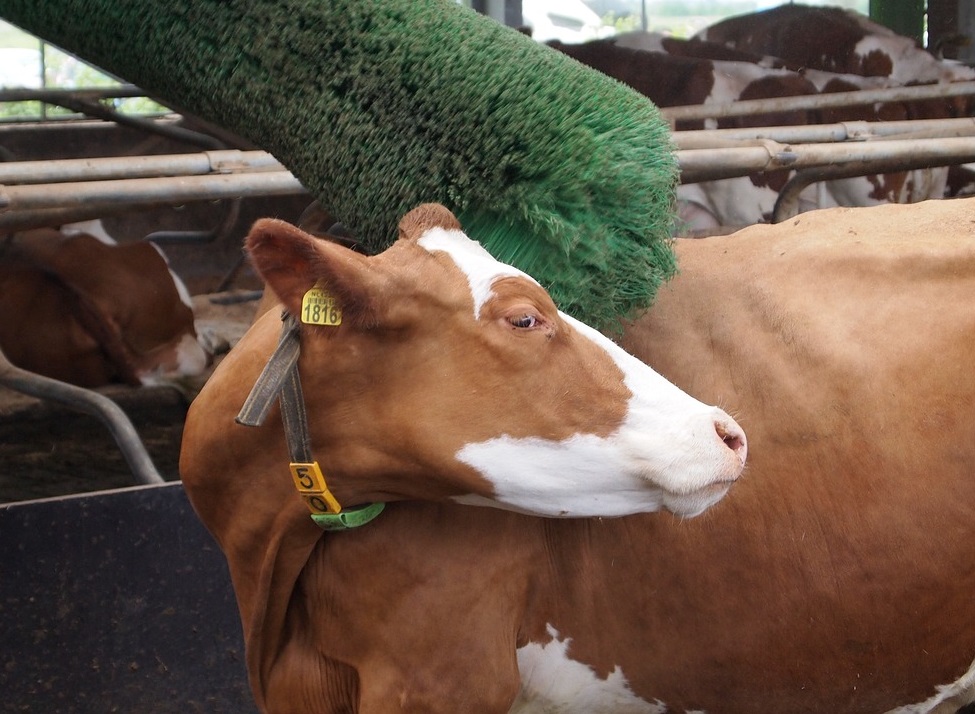How to manage animal stress in livestock production

Animals can experience stress for several reasons: fatigue or injury; hunger, thirst or temperature changes; unfamiliar people, handling, changes in environment or surroundings, etc. Efficient, experienced, calm livestock handling, using recommended techniques and facilities, and taking measures to eliminate pain and accidental injury all play a role in reducing animal stress.
Stress is a physical or mental factor that causes tension in the body or mind of both people and animals. Stress is a reaction that usually initiates the “fight or flight” response, composed of both endocrine and neurologic factors, with adrenaline and noradrenaline. Stress-provoking factors may come from the outside, such as the environment and psychological or social situations of the body or from the inside, for example, illnesses or medical procedures.
Physical, chemical and other perceived stressors can affect animals and cause primary, secondary, and whole-body responses. Each individual responds to stress differently, and for animals, the stress response may depend on their species, breeds and living conditions.
The stress response includes several changes that may have negative effects on livestock. These effects include changes in the immune function and increased susceptibility to disease, decreased feed intake and rumination, inhibition of oxytocin release and reduced fertility. These factors not only impact on the animal’s welfare but also on the productivity of a farm. This is why farmers need to assess and anticipate animal stress on all levels and manage it appropriately.
There are many phases inherent to the farm animal’s life, which may represent a stressful moment, such as transition phases, like weaning, which can be a delicate period for a piglet, for instance, or giving birth and lactation for nursing sows, who will need supplements of energy to better care for their newborns. Other common stressful situations for domestic animals include health care procedures. Stress induced by handling agitates and excites animals, which increases body temperature and heart rate, raises corticoid levels, such as adrenaline in their blood, and reduces immune functions, leaving the animal more susceptible to diseases. Animals accustomed since their birth to human proximity will naturally have a less intense physiological response than animals that have been raised in a pasture with little human contact.
Environmental stress has an impact on livestock, too. All animals perform better in their “thermal comfort” zone, which varies among species. This stress may be managed by providing adequate nutrition and hydration in each case, with proper management practices, such as shelters, ventilation and health care when needed. Avoiding handling the animals as much as possible would be almost the perfect solution in every developed farm. That is why, in some places around the world, farmers have begun to implement some advanced measures as far as finances allow. For instance, with automated milking robots, cows enter whenever they want, and there are no pressures for them to be herded through the farm to be milked.
Apart from facilities and general shelter, nutrition also plays an important role; therefore, nutritional strategies can help animals cope with eventual challenges from their surroundings, improving their welfare. For instance, to avoid loss of appetite and, therefore, undernutrition of newborn piglets, farmers will choose flavourings to increase the palatability of the diet after lactation and then stimulate the animals’ appetite. Feed additives, in particular, may also be important in maintaining footpad and hoof health. Together with animal health care, these contribute to stronger joints and support the immune system of animals by maintaining gut health, resulting in increased resilience to stressors and infectious diseases.
Giving high-caloric feeds in winter to animals may help them cope with low temperatures when used together with adequate heating systems for enclosures and avoiding cold air flows. On the other hand, providing low-caloric feed in summer can help tackle the effect of high temperatures, avoiding the fact that the animal may generate more body heat. Adequate shaded areas around the enclosures or in pastures should accompany this—adequate ventilation in indoor facilities and the availability of freshwater sources in different formats. For example, drinking water in the case of cattle and showers for pigs can also reduce stress. And one perhaps more novel destressing tool for cattle and dairy cows is an automatic brushing system or well-placed static brushes for cows to have a good scratch. Who doesn’t like a nice back massage to relieve life’s stresses?